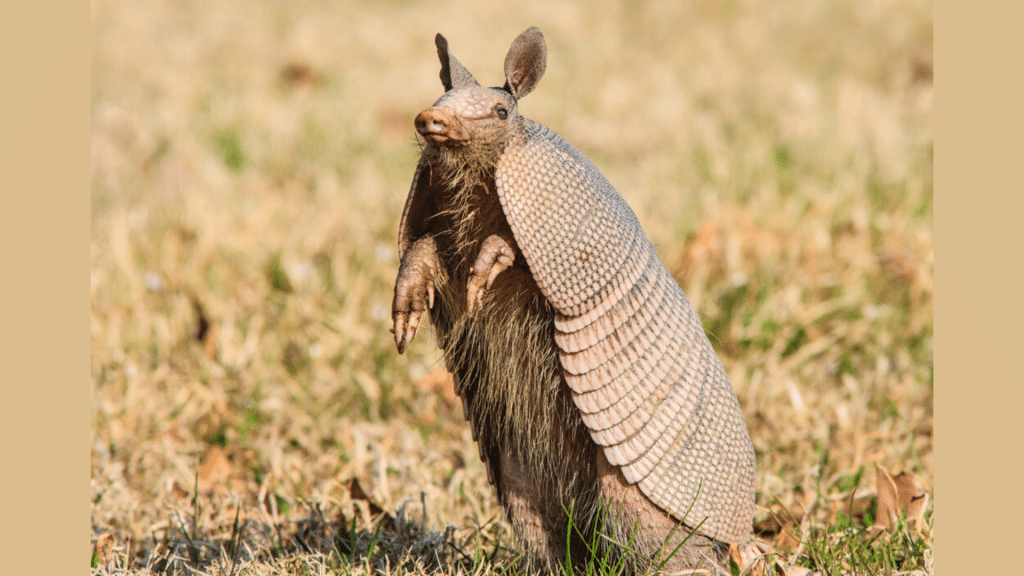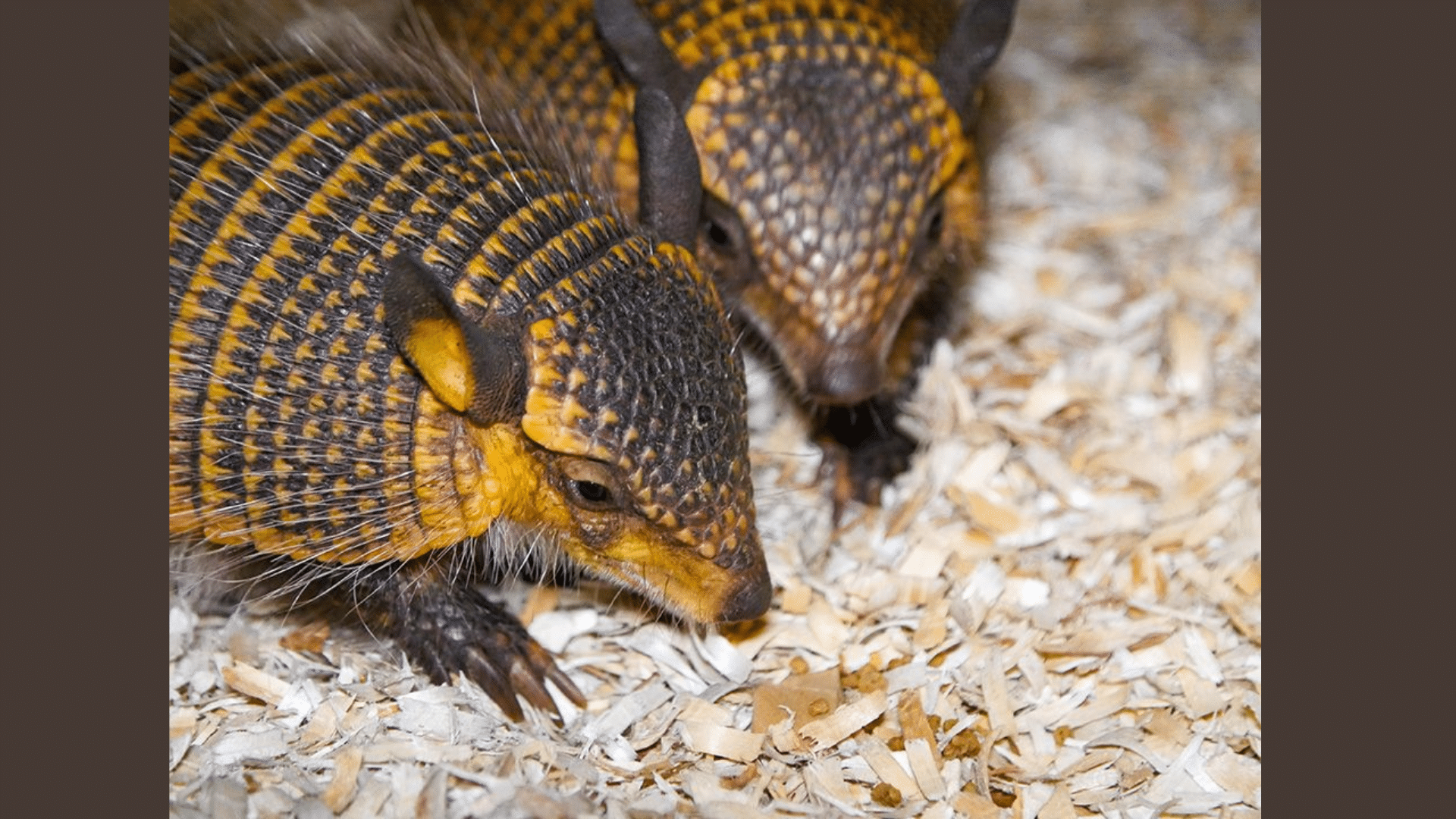Armadillos are wonderful creatures that are known for their hard, armor-like shells and unique behavior.
While these animals are generally shy and prefer to keep to themselves, there are times when they might feel threatened or cornered.
But, this raises an important question: Do armadillos bite?
So, understanding armadillos and their habits is key to answering this question, but it’s not always as simple as it sounds.
These animals have a unique way of responding to danger, and their bites should not be taken lightly.
Let’s look into the details and find out.
Do Armadillos Bite?
Armadillos are generally non-aggressive animals and rarely bite. Their first instinct when faced with danger is to flee or hide.
However, if they feel threatened or cornered, they may resort to biting in self-defense. Despite having small, sharp teeth, their bites are not typically strong enough to cause serious harm.
Armadillos’ teeth are suited for eating insects and small invertebrates, not for tearing flesh. While their bites are uncommon and usually not dangerous, any animal bite carries a potential risk of infection.
To avoid provoking an armadillo, it’s important to keep your distance and remain calm if you encounter one. Bites are rare, but it’s always best to exercise caution and respect wildlife.
Is an Armadillo Bite Dangerous?
While armadillo bites are rare, they can still cause problems if not treated properly. Their bite is usually not strong enough to cause serious injury, but if bacteria enter the skin, even a small wound can lead to infection.
Armadillos don’t have sharp fangs like some predators, but they do have small teeth that can break the skin in certain situations.
The real concern isn’t the bite itself; it’s how your body reacts afterward. Redness, swelling, or pain around the bite may mean it’s infected.
Actions Required If An Armadillo Bites You
If an armadillo bites you, here’s what you should do:
- Immediately wash the bite with soap and water to remove any dirt or bacteria.
- Use an antiseptic or antibiotic ointment to reduce the risk of infection.
- If the bite is bleeding, apply pressure with a clean cloth or bandage until the bleeding stops.
- Keep an eye on the wound for signs of infection, such as redness, swelling, or pus.
- It’s important to see a healthcare provider, especially if the bite is deep or shows signs of infection.
- If the wound is deep or caused by a puncture, your doctor may recommend a tetanus shot.
Common Myths About Armadillo Bites
| Myth | Fact |
|---|---|
| Armadillos are aggressive | Armadillos are shy and avoid confrontation whenever possible. |
| Armadillos carry diseases through bites. | While armadillos can carry diseases like leprosy, bites alone do not typically spread them. |
| All armadillo species behave the same. | Different armadillo species have varying behaviors and temperaments; not all will react the same way when threatened. |
What to Do if You Encounter an Armadillo?
If you encounter an armadillo, it’s best to keep your distance. Avoid cornering or threatening the animal, as this could provoke it into defensive behavior.
And, if it seems aggressive or approaches too closely, slowly back away without sudden movements, as quick actions may startle it.
So, never attempt to touch or capture an armadillo, as it may bite in self-defense. Always prioritize your safety and the well-being of the animal.
Fun Facts About Armadillos
Here are some fun facts that highlight what makes these little armored animals so interesting.
- Protective Shell: The armadillo’s shell is made of bony plates that offer protection from predators.
- Unique Diet: Armadillos consume a variety of insects, worms, and small plants, utilizing their keen sense of smell to locate food.
- Temperature Sensitivity: They are sensitive to extreme temperatures, which is why they prefer warmer climates.
- Jumping Habit: When startled, armadillos can jump high into the air, a behavior that helps them escape predators.
- Armor Thickness: An armadillo’s armor can be quite thick, sometimes as much as 1.5 centimeters, depending on the species.
- Ability to Hold Breath: Some armadillos can hold their breath underwater for several minutes when swimming or crossing bodies of water.
- Armored Tail: Many armadillos have a long tail covered in armor, which helps them balance and protect themselves.
- Unique Reproduction: Most armadillo species have identical quadruplets, meaning that four babies are born from the same egg.
- Wide Range of Habitats: Armadillos can inhabit a wide range of habitats, including forests, grasslands, and arid deserts.
Conclusion
Armadillos are shy, solitary animals that rarely pose a threat to humans. Although they may bite if provoked, such incidents are uncommon and typically not harmful.
Their unique traits, like their armored shell, digging habits, and diet, make them remarkable members of the ecosystem.
So, by learning about their behavior, addressing common misconceptions, and handling encounters with care, you can appreciate these creatures without putting yourselves or them at risk.
Note: Respecting their space ensures safe and peaceful coexistence.





















